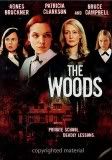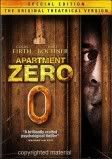
That wraps up the Halloween Movie Fest for this year! We got through five titles, not too shabby...
Happy Halloween!!

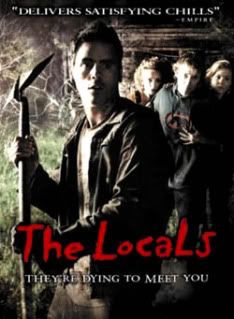
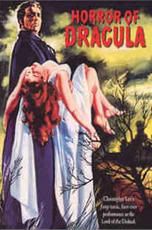
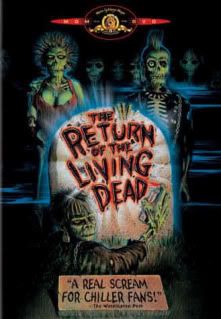


While we question the reality of a situation we must also question who a person really is in a Cronenberg film. There are a wide variety of ways that the identity of a Cronenberg character comes under speculation. In films such as Shivers, Rabid and The Fly, it is disease or metamorphosis of some kind that causes a drastic change in identity. In Videodrome, The Dead Zone, Naked Lunch and M. Butterfly, it is a deliberate act by a character masking their true self that causes confusion.
Cronenberg takes this a step further in his truly unique and fascinating use of actors to really make his audience unsure as to who is who. In Naked Lunch, eXistenZ and Spider, certain actors play multiple characters to increase as well as confuse the layers of meaning to what is happening. This is especially powerful in Spider when the same actress portrays Spider’s mother as well as the prostitute he imagines his father having an affair with and the woman who runs the transitional home he lives in as an adult. "It’s very hard at this point to know what’s real and what’s not…the audience’s confusion is also Spider’s confusion.”(Spider Com. 35:06)
In exploring David Cronenberg’s films, it is essential to not only look at specific themes but to also address the overall atmosphere of feeling that they create. Extreme violence and destruction play a central role in these movies with the vast majority ending in death, often in the form of suicide. What is interesting is how this element has really evolved over the span of Cronenberg’s career, from chaos to deliberate and sophisticated subtlety.
Beginning with Shivers and on through Cronenberg’s first few films, the violence and death is frenzied, messy and loud. As character development becomes more central along with performance, death and destruction takes on a sad quality, as successfully executed for the first time in The Fly. “…I’m an insect who dreamt he was a man and loved it, but now the dream is over and the insect is awake.”(1.17:58) As Seth Brundle utters this haunting line, the tragedy of what is happening to him becomes real to us through his articulation. The audience is able to recognize that what’s really going on is incredible loss, loss of life and loss of love. When he is shot by his lover, she is not defeating a monster but ending the misery and suffering of what used to be the man she loved.
Starting with Cronenberg’s next film Dead Ringers, this element of sadness intensifies and takes on a sweet and beautiful tone through the music and cinematography which stands in contrast to the violence of the situation. It is absolutely heart-wrenching to see Beverly’s reaction to the sight of his dead brother at the conclusion of the film even though the audience knows Elliot died at Beverly’s hand. The utter sorrow and devastation comes across through the childlike whimperings of Beverly combined with the visual beauty of the scene. “It has to do with that element of being human. It has to do with this ineffable sadness that is an element of human existence.”(Cronenberg 149)
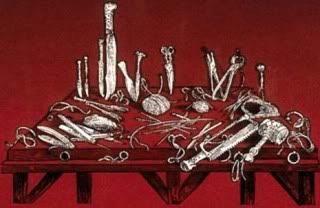
This theme of sorrowful violence progresses and intensifies through M. Butterfly, Crash and Spider. Once again, Spider proves to be an especially potent and striking example. From beginning to end, this film feels desolate, cold and melancholy but is contrasted by the absolute visual and audible beauty presented to the audience. “For Cronenberg it is an austere record of a poor human’s sad, quiet condition of suffering…a massive force pressing inwards on Spider and compressing everything into a state of dense unceasing pain.”(Beard 473) For us, the audience, the end comes as a devastating catharsis as our confusion is finally cleared but at a dismal cost.
David Cronenberg’s most recent film, A History of Violence, on the surface may seem to be evidence that he has finally crossed over into mainstream Hollywood with a straightforward gangster film. While it may come across in this fashion upon a single viewing as a stand-alone film, this conclusion would be a mistake as this study will show upon closer examination.
As the crux of this writing is looking at David Cronenberg as an auteur, we must approach A History of Violence from an auteurist standpoint. In other words, we have no basis for judgement unless we look at it as it compares and fits with the body of work as a whole. With this in mind, of the themes discussed, which ones if any, appear in History? Does this film successfully contribute to Cronenberg’s status as an auteur or does it break away from the common themes and concerns as addressed in his earlier work?
A History of Violence is the story of a man who at first is shown as a quiet, loving family man in a small, idyllic town somewhere in the Midwest. We soon come to realize that Tom Stall is not who we think he is when he is forced to kill two men who come into the diner he owns. There is something dark hidden in his past that is forced to the surface. This element certainly fits in with idea that people are not who we think they are. The Tom Stall persona is an invention, a new identity created by former gangster, Joey Cusack.
As Tom Stall’s past is uncovered, the audience witnesses his subtle regression back into his former self. Actor Viggo Mortensen displays an acutely controlled performance through the slightest variations in facial expression and linguistic style to let us know that there is something dark and deadly under the façade of this small town man. In this skilled portrayal, Mortensen perfectly illustrates how Cronenberg has evolved, refining his ability to use strength of performance to explore a common theme in a fashion that carries much more potency.
In History, we can extend the concept of a ‘body-consciousness’ to encompass the idea of the human condition and the threat certain elements thereof pose to our mortality bringing us back to our fear of death. Cronenberg discusses in an interview that while violence is something that is very common in the world we live in, we try to turn away from the reality of it happening to us. From his own perspective as a director, he says, “…artistically you feel it’s something you have to come to terms with and hope that you’ll deal with it in your creative life and not have to deal with it in your actual day to day life.”(Acts 10:28) The characters in the film must confront devastating evils while the audience keeps it safely on the glowing screen.
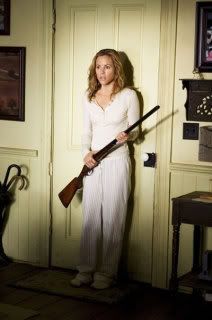
The violence and death in History turns away from the progression of poetic beauty found in Cronenberg’s later films and returns to the gritty, explosive destruction found earlier in his career. As this particular film finally deals explicitly with violence itself, Cronenberg was very specific in what he wanted the audience to contend with, pointing out that “…it’s all very physical human violence and it does very bad things to the human body…the audience finds themselves looking at something particularly disturbing” because “if you’re going to like the violence then you have to accept the consequences…”(History Com. 24:41) We are shown up close what it looks like when a man is shot in the face; there is no beauty in the violence here. He uses graphic realism to force us to acknowledge what really happens outside of the cinema.
It can be concluded that David Cronenberg is in fact a true auteur as the term is used in American auteur criticism. He has many common themes that he continues to return to, building and progressing the discussion in each film he makes which according to Cronenberg’s own admission, reflect his personal concerns and interests. Actor Martin Sheen recognized this when he worked with the director on The Dead Zone, recalling, “I knew here was a filmmaker with a definite point-of-view, who was courageous about it and confident enough to trust in it.”(Lucas 27) As an auteur, Cronenberg has uncompromisingly insisted on communicating this point-of-view through his work over the span of more than three decades and continues to do so today. What will he show us next?
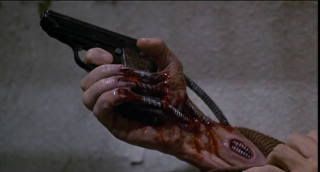 The obsession with modifying ourselves through technology expands to include the re-invention of our environment in Cronenberg’s eXistenZ. In this film that takes place in the not-so-far away future, video games have become even more of a craze than they already are. What is unique about these video games while very fitting for a Cronenberg project, is that they plug directly into the human body. Gamers have ports that are surgically installed into their backs and the flesh-like gamepods are connected by what looks disturbingly like an umbilical cord. Once plugged in, the gamer is whisked into a virtual world that looks, feels and interacts every bit as realistically as the real world.
The obsession with modifying ourselves through technology expands to include the re-invention of our environment in Cronenberg’s eXistenZ. In this film that takes place in the not-so-far away future, video games have become even more of a craze than they already are. What is unique about these video games while very fitting for a Cronenberg project, is that they plug directly into the human body. Gamers have ports that are surgically installed into their backs and the flesh-like gamepods are connected by what looks disturbingly like an umbilical cord. Once plugged in, the gamer is whisked into a virtual world that looks, feels and interacts every bit as realistically as the real world. As stated earlier, while we are unable to accept our bodies, we are also unwilling to be satisfied with our environment. Everything around us is created by us, by technology. The first thing we see when we wake up is a world of our own creation. “We want light at night, we want heat when it’s cold…and so for humans, there is no such thing as a natural environment, we invent our own.”(Rabid Com. 18:55) It is the extreme of this concept that Cronenberg explores in eXistenZ, how far will we go to distance ourselves from what is real in order to shield ourselves from our fears?
Human invention is not the only way that reality is threatened in David Cronenberg’s films. Again and again, he shows how nothing is what it seems and people are not who we think they are upon initial examination. One way this is presented is through characters’ hallucinations. Videodrome’s Max Renn is constantly seeing things that turn out to be not real. As we experience the film from his point of view, it becomes increasingly more difficult to decipher what is really happening and what is just a hallucination. In The Dead Zone, Johnny Smith has psychic visions that seem very real until they are revealed to be otherwise. Naked Lunch runs rampant with hallucinatory scenes brought on by extreme drug use that makes it almost impossible to understand what is really happening to the main character.
Cronenberg brings his most sophisticated approach to this in his later film, Spider. Spider is a man who suffers from what we assume to be schizophrenia, a deterioration of the mind to return to the earlier discussion of disease. The film is about the main character’s attempt to unravel the mystery of his past. This occurs through flashbacks from his point of view but it soon becomes apparent that these flashbacks are unreliable. “Memory is not a static, absolute thing, it’s not like a documentary that you can play at any given moment but actually it’s a volatile, created thing that we’re constantly creating and re-creating.”(Spider Com. 28:46) This holds true for all of us but this combined with Spider’s compromised mental state causes great confusion for what the truth really is.
To be continued...
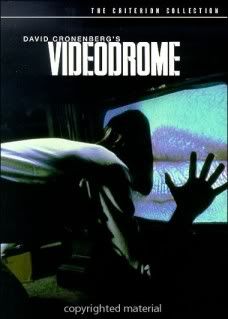
- David Cronenberg (Rabid commentary 34:05)
In the world of film, an auteur is a director who can for all intents and purposes, be considered the author of the piece he directs. The drama that plays out on the screen embodies the vision held by the director and conveys the message intended through the choices made by the director. This is often a difficult task to accomplish within the Hollywood system where story and final product are often dictated by the studios providing the funding. David Cronenberg is one director who has managed to successfully retain his identity as an auteur throughout his career in independent filmmaking while occasionally crossing over into the Hollywood limelight.Beginning with his first feature-length film, Shivers, Cronenberg established areas of personal interest and has consistently explored and re-explored common themes of “body horror”, technology as relating to the body, identity and alienation. Not only does Cronenberg return again and again to the same issues and concerns, in doing so, he is perpetually developing and refining his approach to the subject matter. While celebrating moderate success within the confines of Hollywood, as an auteur, Cronenberg has managed to preserve the execution of his vision through his work.
Before continuing with this study of David Cronenberg, it is important to clarify what is truly meant by the term auteur. In American film criticism, the concept of the auteur comes from auteur theory as introduced by film critic Andrew Sarris in the early 1960s. According to Sarris, auteur theory is the approach by which the entire body of work by a director must be taken under consideration in order to understand an individual film as it will be found that “after a given number of films, a pattern is established.”(Sarris/"Perils" 28) It follows that in order to be a true auteur, “over a group of films, a director must exhibit certain recurrent characteristics of style, which serve as his signature. The way a film looks and moves should have some relationship to the way a director thinks and feels.”(Sarris/"Notes" 516)
David Cronenberg can absolutely be considered a true auteur by Sarris’s definition. When looking at his complete filmography, certain patterns emerge in respect to theme as well as the look, tone and feel of Cronenberg’s pictures. This study will not cover every aspect of these patterns but will focus in on some of the more prominent, recurring themes and approaches that have come to define Cronenberg as a director and auteur.
As he himself acknowledges, Cronenberg’s films tend to be very body-conscious with the narrative often firmly imbedded within the body. “I gradually realized that I was more interested in things that happen inside you…to a certain extent, it’s your own body that’s the monster.”(Fear 11:16) In the book Cronenberg on Cronenberg, he discusses the fact that we are always trying to prepare ourselves for that which is inevitable but because certain inevitabilities are deemed taboo within our society, we find alternative ways to discuss and face these issues. “One of the ways man has always done this is through art. The cinema is one way we can do that. We confront things in a relatively safe context.”(73) With this is mind, Cronenberg began his exploration of the body through our fear of disease, aging and dying.
To be continued...

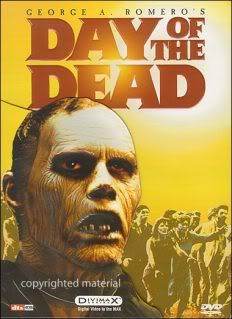
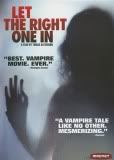
Oskar is a 12 year old loner who seems to have trouble making friends, let alone keeping out of the path of the bullies who torment him daily. Everything changes when he meets Eli, a mysterious girl who moves into his apartment building in the middle of the night. The two children connect through their mutual loneliness but it doesn’t take long for Oskar to realize that Eli is hiding a sinister secret.
Let the Right One In is not a horror movie, at least not in the traditional sense. It is a darkly bittersweet drama with horror elements that takes on the vampire mythology from a fresh if chilly perspective. The film is set in the dead of winter and the ever snow white setting lends a feeling of numbing emptiness that complements the story in all the right ways. The plot is character-driven with brief moments of brutality that are over almost as soon as they begin. You feel for these children even as you realize that their moral compasses may be diseased.
The cinematography in Let the Right One In is interesting and deliberate. The camera is not merely there to relay a story but to manipulate every step of the telling. On several occasions, the focus sharply zeroes in on the one stationary subject in the frame while all the action of interest remains blurred in the background where the viewer has to make assumptions about what is actually happening. I found myself almost frustrated that I wasn’t able to look at what was really taking place but at the same time, it forced me to be all the more conscious of the choices being made in the telling of the story.
The only thing that keeps me from giving Let the Right One In a top rating of four black sheep is one solitary scene. For the majority of the film, the special effects are subtle but disturbingly effective, giving the viewer just enough to understand the gravity of what is happening. For reasons I can’t possibly fathom, there is a scene where CGI is grossly and comically overused to the point of distraction. You’ll know what I’m talking about when you see the movie and in my mind it is a tragic besmirching of great filmmaking. The fact that this is such an excellent film makes it all the more sad.
There you have it. Now go out and rent this one or even buy it; you won’t be sorry!
Now on to my news: I am in the planning process for a podcast that will be available for what I hope will be your listening pleasure sometime mid to late summer of this year. I will have a co-host and we will be discussing movies, movies, and more movies that fit under the general category of genre/cult/outside-the-mainstream. I have a lot of ideas for the different segments that will be featured but I’m still in the brainstorming stage, so if you have any suggestions, please feel free to comment. Most likely the name will be The CineFiles of Citizen Irene or something similar and once the podcast launches, it will replace this blog. I will keep you posted and please, please send your comments my way!
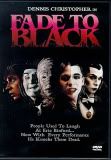 Fade To Black (1980)
Fade To Black (1980) Raw Meat (1972)
Raw Meat (1972) Anatomie/Anatomy (2000)
Anatomie/Anatomy (2000)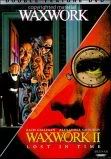 Waxwork (1988)
Waxwork (1988)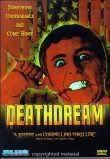 Deathdream (1974)
Deathdream (1974)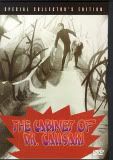 The Cabinet of Dr. Caligari (1920)
The Cabinet of Dr. Caligari (1920) The Wicker Man (1973)
The Wicker Man (1973)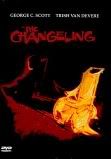 The Changeling (1980)
The Changeling (1980)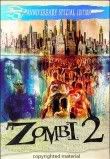 Zombie 2 (1979)
Zombie 2 (1979)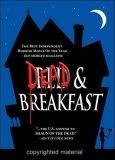 Dead & Breakfast (2004)
Dead & Breakfast (2004)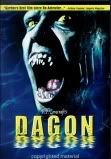 Dagon (2001)
Dagon (2001)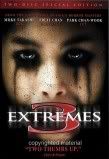 Saam gang yi/3 Extremes (2004)
Saam gang yi/3 Extremes (2004)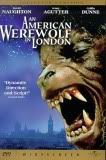 An American Werewolf in London (1981)
An American Werewolf in London (1981) Hell House (2001)
Hell House (2001) Dead & Buried (1981)
Dead & Buried (1981)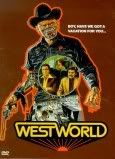
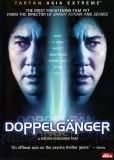
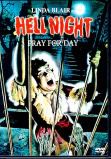

Here is an interesting film from Spain that does indeed star Gary Oldman, speaking Spanish no less! Actually, the majority of The Backwoods is an even mixture of English and Spanish as it follows two British couples vacationing in the countryside of Spain. Paul (Oldman) has recently purchased the home that once belonged to his mother, a Spanish woman who married a Brit, and he has grand plans for fixing it up and living there permanently with his wife Isabel (Sanchez-Gijon). They are joined for the weekend by Norman (Considine) and Lucy (Ledoyen) who are obviously having some serious marital issues that are leaving things between them looking rather grim. Paul and Norman trek off to do some hunting and in the process come across an abandoned house only to find a wild, somewhat deformed girl locked up inside. Paul insists they take her with them although Norman has serious misgivings being the indecisive and weak man that he is. This kicks off a chain of events that can lead nowhere good as the locals come after them and the missing girl.
This movie seems to get a bad rap but I really enjoyed it. One criticism is that it rips off the film Straw Dogs. Now I have to admit, Straw Dogs is one of those movies I'm always telling myself I need to see but it just hasn't happened yet. I did however, read an in-depth description of the film and while I can definitely see similarities, I feel like this is truly a different story that makes homages to Sam Peckinpah's classic. The story is deliberately paced so for some, it may seem a bit slow at times, something I appreciate if done well. The director really takes the time to develop the characters and give us a chance to get to know them and what's motivating their actions. It's not cut and dry as far as who's bad and who's good. We have a chance to see more than one side of the leader of the locals and while his actions are abhorrent, we're given a chance to see the humanity inside. Also, the movie is set in the 1970's possibly to further evoke the feel of Straw Dogs but instead of feeling like a period piece, it really looks like it could have been filmed in the 70's, even the acting fits the mold. The vibe of the whole flick is pretty well established by the opening credit sequence; I dig it.
By no means is this movie destined to be a classic, but I'm glad I bought it and I'm sure I'll enjoy further viewings. It's a solid picture and a neat little treat if you are a Gary Oldman fan. Just be ready to take your time and I think most of you won't be sorry.
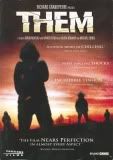
The story follows Clementine (Olivia Bonamy) home from work as a middle school teacher. She lives with her husband Lucas (Michael Cohen) in a house they have recently purchased and are in the process of renovating. Of course it is out in the middle of nowhere and the house is a ridiculously large mansion with a million rooms, nooks and crannies, all bad things when someone is trying to kill you. Once you suspend your disbelief that they would be living in such a space, you can really buckle down and enjoy the ride. Soon after dark, things begin happening like strange phone calls, noises outside, and appliances turning themselves on to let us know Lucas and Clementine are not alone. They spend the rest of the evening being terrorized and tormented. For me, what makes this film work is that for much of the time, we have no idea who or what is launching this attack and then there is no terrifying reveal of a monster or depraved attacker, instead you see just enough to know what is happening but you have to wait until the end to understand why. This film comes from directing team Moreau and Palud, the same guys who brought us the American remake of The Eye with Jessica Alba, a B- horror flick that doesn't live up to its original Chinese version directed by the Pang brothers. Hopefully their next venture will be closer in quality to Ils.
One more thing to note about this film: The American film The Strangers seems to borrow many elements from Ils although the director Bryan Bertino claims to have been inspired by Helter Skelter more than anything else. I just want to comment that I think it's sad that Hollywood seems to think that U.S. audiences need to have these films spoon-fed to them in Americanized versions that generally are never as good as the movies that inspire them. When the original versions are released here in America, more often than not they are dubbed in English, such is the case for Haute Tension, as if having to read subtitles is going to ruin our movie viewing experience. Are we really that unimaginative a people? I like to think most of us are better than that. (Of course I realize that this way, the studios make tons of money, but come on.)

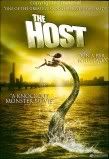
Note: Be sure to watch The Host in Korean with English subtitles. The copy I have automatically plays it dubbed in English and I am a firm opponent of dubbing. It covers up the original sound track created to go with the film and I feel that this ruins the experience as it was intended by everyone who worked to bring it to you. Also, in all likelihood the budget for voice actors was smaller than for the actual screen actors so you will certainly suffer from deficient acting, or at least lower quality acting than the original actors. The one exception to this is certain Italian films because the Italian film industry has a long tradition of dubbing their films and often Italian movies are shot with no intention to even use the original audio, this is especially true for Italian horror. I've seen Italian movies where the original dialog was filmed in multiple languages because dubbing would automatically take place later. Just be sure to check if the original audio track is available before succumbing to a dubbed film.
